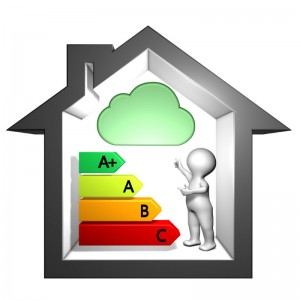All of us face a variety of risks to our health as we go about our day-to-day lives. Driving in cars, flying in airplanes, engaging in recreational activities, and being exposed to environmental pollutants all pose a certain degree of inherent risk. Some of these risks are simply unavoidable, some we choose to accept because we simply don’t want to have to alter the way we lead our lives, and some are risks we might decide to avoid if we had the opportunity to make informed choices. Indoor air pollution is one risk that you can do something about. The professionals at Clean Sweep of Anne Arundel County are here to help you make those informed choices.
The EPA and Your IAQ
According to the Environmental Protection Agency (EPA), indoor air is often more than 10 times (and sometimes more than 100 times) more polluted than outdoor air. Indoor air pollutants contribute to asthma as well as other respiratory conditions and diseases. Indoor air quality (IAQ) can be particularly sketchy during the summer and winter months when your home is more likely to be sealed tight to keep air-conditioned or heated air from escaping. Our homes today also contain many furnishings, appliances, and products that can negatively affect IAQ.
Combatting CO and Combustion Pollutants
Your fireplace is a potential source of carbon monoxide (CO) and combustion pollutants, especially if it’s not properly maintained. There are small things you as a homeowner can do to improve the quality of the air in your home this heating season. Open the damper when using your fireplace. Have the flue and chimney inspected annually for exhaust backdrafting, flue obstructions or cracks, excess creosote, or other damage. Install smoke and CO detectors (combination units are also available) throughout your home if you don’t have them installed already. Improved ventilation will improve IAQ by increasing the amount of fresh outdoor air coming into your home, which will help to dilute the concentrations of indoor pollutants and push stale indoor air out of your home.
IAQ and Your Health
Indoor air pollutants can have damaging effects on your health. Some may be experienced soon after exposure but can also remain hidden until years later. Immediate effects may show up after a single exposure or repeated exposures. These include irritation of the eyes, nose, and throat, headaches, dizziness, and fatigue. Such immediate effects are usually short-term and treatable. Other health effects may show up either years after exposure has occurred or only after long or repeated periods of exposure have taken place. These effects, which include some respiratory diseases, heart disease, and cancer, can be severely debilitating and/or potentially fatal.
Consider potential effects of indoor air pollution carefully because your life could depend on it. Keep woodstove and fireplace emissions to a minimum. Make certain that doors in old woodstoves are tight fitting. Use properly seasoned wood. Have your fireplace, flue, and chimney inspected annually; promptly repair cracks or damaged parts. Blocked, leaking, or damaged chimneys or flues release harmful combustion gases and particles and even fatal concentrations of CO. Proper maintenance is key. Give us a call today so we can help you optimize the IAQ in your home.

